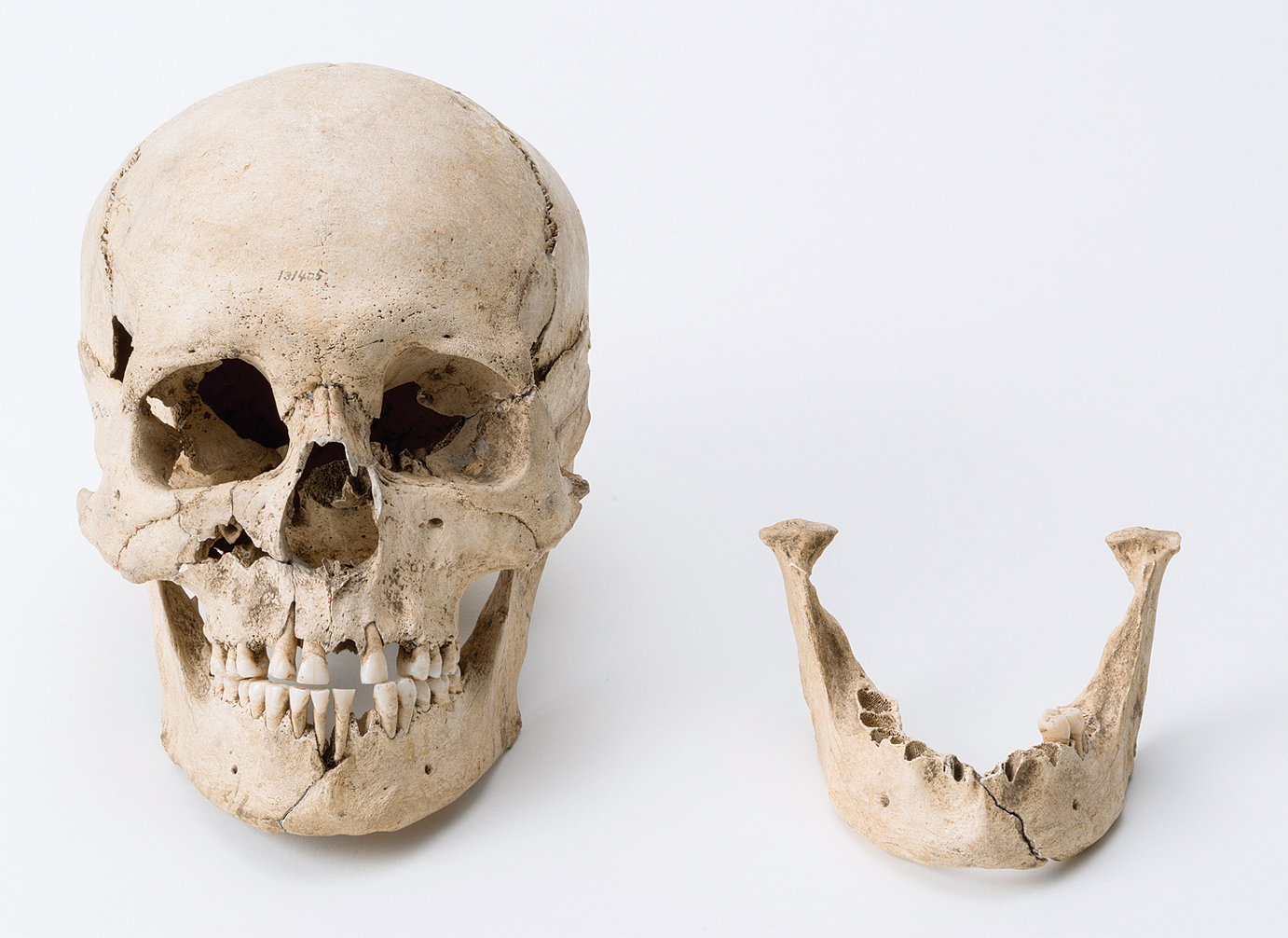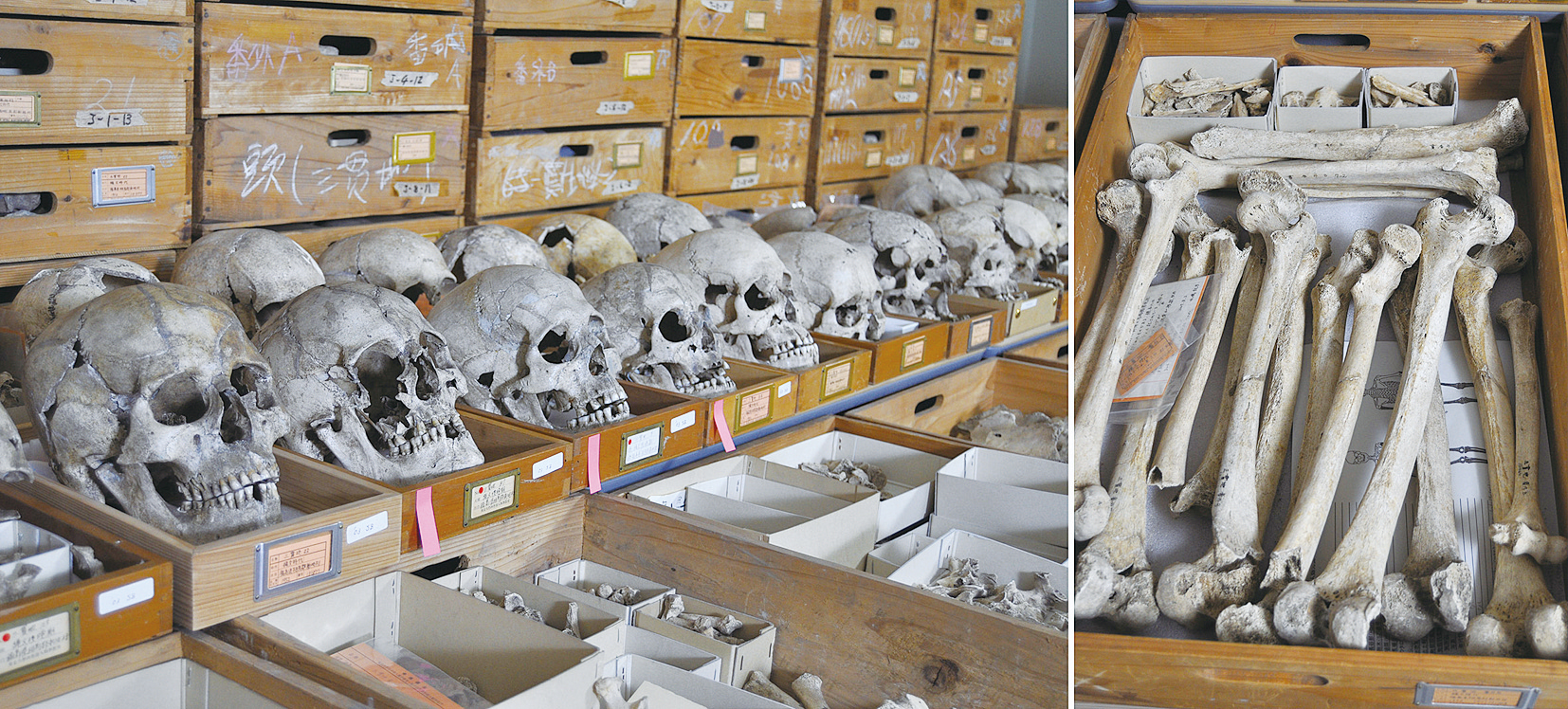B52
Deciphering Jomon ancestry
the first extraction of nuclear DNA
The prehistoric Jomon is well known from the Holocene of Japan. The Jomon period extended from approximately 16000 to 3000 BP, and is well represented by skeletal remains, especially those postdating circa 7000 BP. For an Asian population, its skull is characterized by some unique or perhaps archaic suite of features, including a low, broad face, distinct glabellar eminence, prominent nasal bridge with sagittally oriented frontal process of the maxilla, and tendency for a relatively low position of maximum cranial breadth. Because the Jomon skull does not exhibit close morphological affinities with known continental Asian populations, its origins have been considered a mystery. It is possible that Jomon ancestry extends back to more than 30,000 BP, prior to populational differentiations that led to the modern Asian populations. Recent ancient DNA studies, performed on the exhibited mandible and other specimens, are shedding new light on the affinities of the Jomon. (Gen Suwa)
References
海部陽介(2016)『日本人はどこから来たのか』文藝春秋。
斉藤成也(2015)『日本列島人の歴史』岩波ジュニア新書。
篠田謙一 (2015)『DNAで語る日本人起源論』岩波現代全書。
百々幸雄(2015)『アイヌと縄文人の骨学的研究』ちくま新書。


